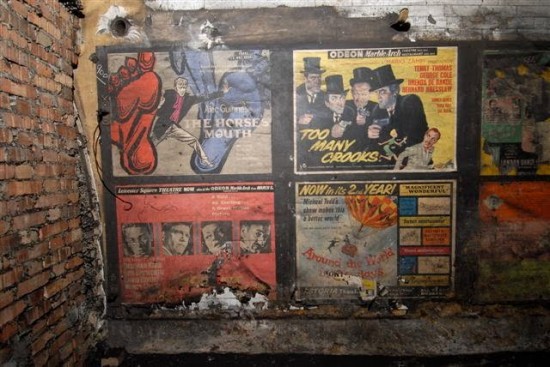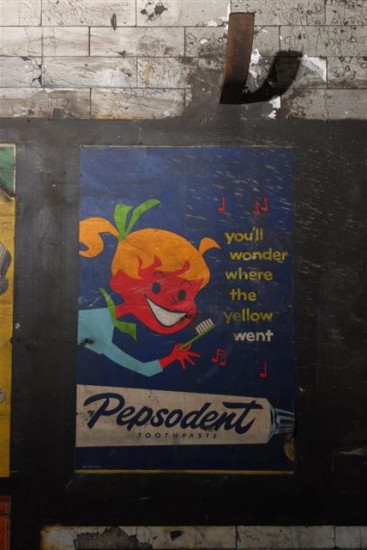
by Robin.
The London Underground recently unearthed a set of advertising posters from the late 1950s in a previously off-limits section of Notting Hill tube station. These gorgeous pastel bygones of West London life seem aeons away from the strangely compelling drone-TV of Seven Days. Forgotten until now, the posters are snapshots of an era of Alec Guinness films and Ideal Home exhibitions; of escape routes from the bustle of the capital via ‘the heart of historic Britain… the River Thames’. Coach trips to ‘every resort in the South West and West’ come complete with pipe smoking cartoon fisherman. The ’50s campaign for Pepsodent toothpaste (“You’ll wonder where the yellow went”) leads you to surmise that the makers secretly added bleach as an ingredient back then.

What’s so baffling and more than a little magical is that a piece of the tube could effectively be forgotten about within the last fifty years. The miniature exhibition space is described by the London Underground as now being ‘wholly inaccessible’ to the public. Once again it’s been built over and blocked off; a dead space left beneath the high street that’s hermitically sealed, ready to be forgotten until the city is rubble.
This strange archaeology of recent history has been going on in slightly different ways throughout London over the last couple of years. Work on the Crossrail line has gradually peeled back the buildings on Oxford Street. Each pendulum swing of the wrecking ball has revealed layer after layer of hand painted signage, some from as far back as the 1850s. Forgotten coffee houses and blacksmiths shops come back to life at the tops of buildings, overshadowing the mobile phone concessions that vie for attention at street level (at least until the glass and concrete of futuristic shopping malls and purpose built clean-lines concert venues smother them over once more).
Just for a while though, it all makes you question what else might lie behind all those new layers of architecture that spring up with each generational shift. Maybe it even makes you daydream back to a time when advertising looked as considered and as beautiful as those Notting Hill station posters; back to a time before tube ads swished and flashed and dazzled like something out of Minority Report with a bad case of ADD.
All pictures are courtesy of London Underground. View more here.